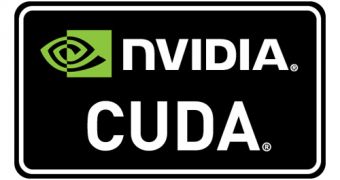Santa Clara, California-based graphics chip maker NVIDIA is said to be working on enabling its prestigious CUDA technology for AMD's GPUs. This solution will enable application developers to optimize their products for use on GPUs from both NVIDIA and AMD, using the CUDA technology. Consequently, this will enable NVIDIA, currently the world's leading vendor of graphics processing units, to gain from the GPU sales of its main competitor, AMD.
There are a number of general purpose GPU (GPGPU) computing standards available today, including OpenCL and Microsoft's DirectX Compute, both of which are currently supported by two leading graphics chip makers, NVIDIA and AMD. However, the two rival companies have also developed their own solutions, with NVIDIA placing a big bet on its CUDA technology, and AMD trying to make up for lost space with its Stream solution. However, according to a recent news-article on the techradar, citing NVIDIA's chief scientist, Bill Dally, the company could be working on further expanding the working environment for its CUDA solution.
“In the future you'll be able to run C with CUDA extensions on a broader range of platforms, so I don't think that will be a fundamental limitation.” Dally said. While not directly confirming the support for AMD's platforms, he added, “I'm familiar with some projects that are underway to enable CUDA on other platforms.”
NVIDIA has gained the appreciation of a considerable number of application developers, a statement that can be verified by taking a look at the hundreds of applications that have been ported over to CUDA, available on the specially designed CUDA Zone website. The comparison to AMD's own solutions makes up for NVIDIA's strong interest in the fast-growing segment, where AMD is yet to make up for lost ground to its competitor.
“There are just a handful of things, and they're generally things that are already available in CUDA. CUDA has just got a lot more traction among the people who are programming parallel applications. It's an easier language to use,” Dally stated.

 14 DAY TRIAL //
14 DAY TRIAL //